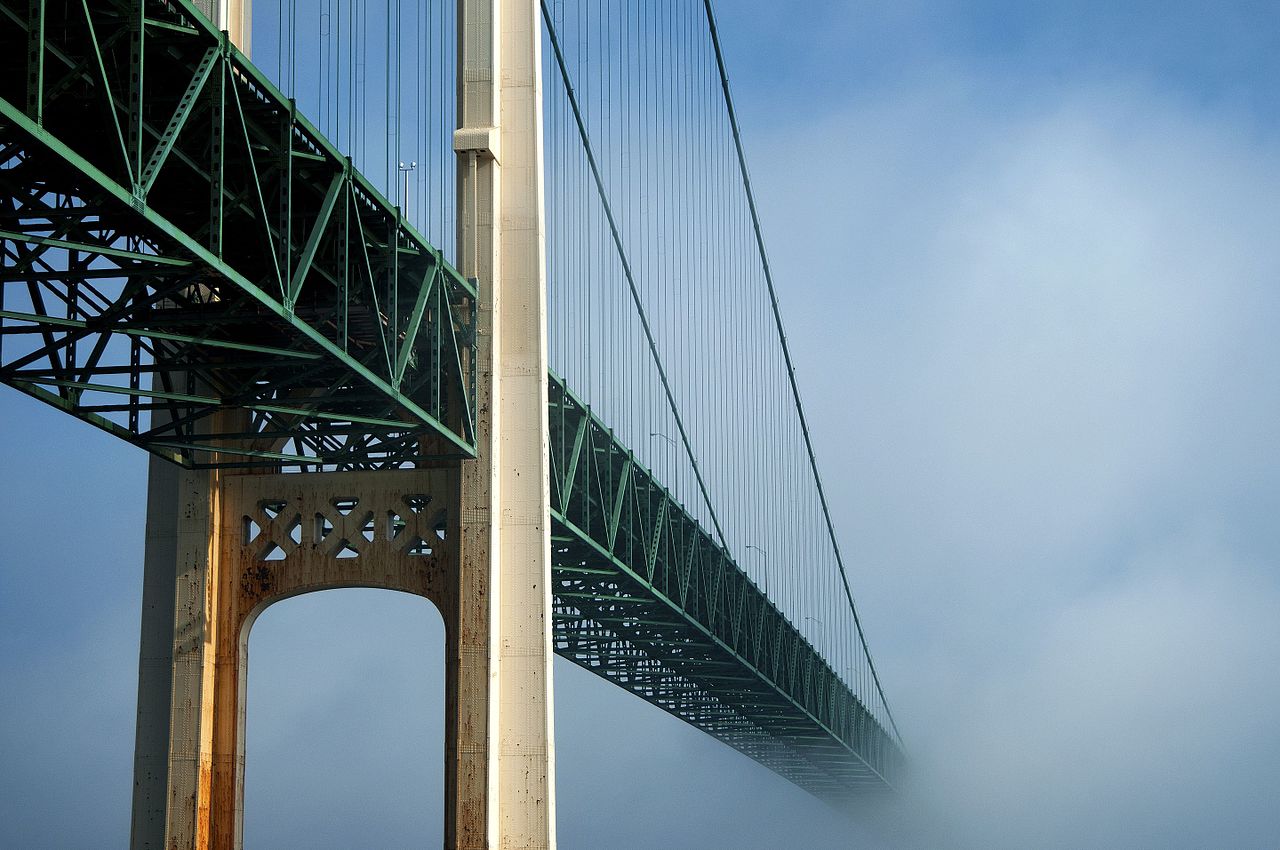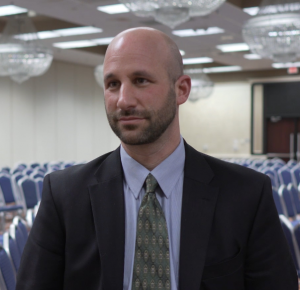
New report just released
Could Michigan’s Upper Peninsula and other parts of the state get the propane gas it needs without the Line 5 Pipeline? A new report just released says “yes.”

Mott Foundation Building Entrance, Photo by Sarah Razak via flickr.com cc 2.0
London Economics International, in a study funded by the Charles Stewart Mott Foundation in cooperation with the National Wildlife Federation, set out to examine alternatives to Enbridge’s Line 5 supply of propane gas to consumers in the State of Michigan. The Line 5 pipeline –which passes through the Straits of Mackinac – provides the natural gas liquids from which the propane is extracted for U.P. residents to use. It’s delivered to a facility in Michigan’s Upper Peninsula as well as to facilities in Ontario that then supply propane throughout the state.
The embargoed report – released for the first time this morning – finds that if Line 5 was shut down, “the prospect of persistent propane supply shortages in Michigan is unlikely.” The report says that even with supply interruptions and weather-driven shortages, the state would be able to take advantage of plentiful supplies.
The Line 5 Pipeline, built in 1953, sits on the lake bed between Michigan’s Upper and Lower Peninsula in the Straits of Mackinac. The 645-mile long pipeline transports 23 million gallons of oil and natural gas liquids each day from Superior, Wisconsin to Sarnia, Ontario. A small fraction – an estimated .35 percent – of the natural gas liquids are extracted in Rapid River, Michigan and distributed throughout the Upper Peninsula.
The Mott Foundation funded the National Wildlife Federation to commission a study on alternatives to Line 5. The propane report is the first of multiple analyses based on that research.

Tim Eder, Environment Program Officer at the Mott Foundation, Photo by mott.org cc 3.0
Tim Eder, Environment Program Officer at the Mott Foundation tells Great Lakes Now, “Gov. Snyder and other state officials who will decide the fate of Line 5 need independent, credible research. The goal is to meet energy needs while protecting the Great Lakes — a crucial source of drinking water and the lifeblood of the region’s economy.”
The report says the lowest-cost alternative options to Enbridge Line 5 would be truck or rail from Superior, Wisconsin.
How much would the price of propane gas go up without Line 5? The London Economics International (LEI) Report (Click here to view report) says the price increase to consumers in the Upper Peninsula would likely be about five cents per gallon.
Here are the key findings of the LEI report:
- There is no shortage of propane in the United States and supply is growing faster than demand.
- The least expensive alternative supply options are pipeline transportation to Superior, Wisconsin combined with either trucking from Superior to Rapid River or rail from Superior to Rapid River. The cost of these two options could be nearly identical. They could add an estimated $0.11 per gallon to the cost of propane supply in the Upper Peninsula. An econometric analysis of propane demand in Michigan shows that this cost increase would translate into a $0.05 per gallon increase in consumer propane prices in the Upper Peninsula.
- Although more expensive options are available, the report says it would not make sense to assume that these would be chosen instead of the least expensive option, except under emergency conditions. Even if rail or trucking from Kincheloe to Rapid River was free, the total cost of using the Kincheloe route would be higher than the route from Edmonton through Superior.
- In the Lower Peninsula, the impact on the cost of propane may be negligible. The report says a price increase of $0.05 per gallon is small compared with the usual volatility of weekly propane prices. Michigan prices swung from $0.86 per gallon to $3.50 per gallon over the past few years. The small price increase from using alternatives to Enbridge Line 5 would be lost in the noise of typical price volatility.

Mike Shriberg, Great LakesRegional Executive Director of the National Wildlife Federation, Photo by Robert Byrne
Great Lakes Regional Executive Director for the Naitonal Wildlife Federation and member of the Michigan Pipeline Safety Advisory Board Mike Shriberg says, “This report shows that Line 5 is not critical to propane supplies in Michigan. For propane consumers, a small investment of resources would eliminate the risk Line 5 poses every day to 441 miles of Great Lakes shoreline, northern Michigan’s regional tourism economy, 60,000 acres of critical wildlife habitat, and irreplaceable tribal and cultural resources.”
(Editor’s Note: Great Lakes Now will be getting responses from Enbridge and others and will post them on this website after the official release of this new report.)
1 Comment
-
pro-enbridge dynamic risk study produced last year said gasoline prices would surge by 1-2 cents a gallon in Michigan if line 5 was shut down. whoptedo! now we know that no grandmas in the UP would freeze from lack of propane either. talk about a no-brainer why have any risk to our great lakes from a 65 year old line that has had 29 leaks totally a million gallons and almost no benefits to michigan?




